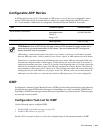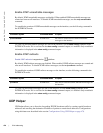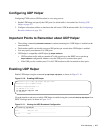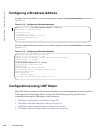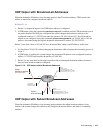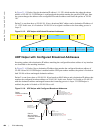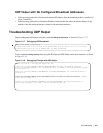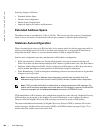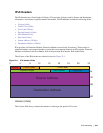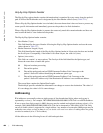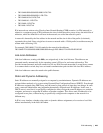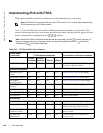
IPv6 Addressing | 483
22
IPv6 Addressing
IPv6 Addressing is supported on platforms: c e s
IPv6 (Internet Protocol Version 6) is the successor to IPv4. Due to the extremely rapid growth in internet
users, and IP addresses, IPv4 is reaching its maximum usage. IPv6 will eventually replace IPv4 usage to
allow for the constant expansion.
This chapter provides a brief discussion of the differences between IPv4 and IPv6, and the Dell Force10
support of IPv6. This chapter discusses the following, but is not intended to be a comprehensive discussion
of IPv6.
• Protocol Overview on page 483
• Extended Address Space
• Stateless Autoconfiguration
• IPv6 Headers
• Implementing IPv6 with FTOS on page 490
• Table 22-2 FTOS and IPv6 Feature Support
• ICMPv6
• Path MTU Discovery
• IPv6 Neighbor Discovery
• QoS for IPv6
• IPv6 Multicast
• SSH over an IPv6 Transport
• Configuration Task List for IPv6 on page 496
Protocol Overview
IPv6 is an evolution of IPv4. IPv6 is generally installed as an upgrade in devices and operating systems.
Most new devices and operating systems support both IPv4 and IPv6.
Note: The basic IPv6 commands are supported on all platforms. However, not all IPv6-based features are
supported on all platforms and on all releases. Refer to Table 22-2 to see which FTOS version supports
an IPv6 feature on each platform.



